Discover 11 hidden attractions, cool sights, and unusual things to do in Ceuta (Spain). Don't miss out on these must-see attractions: Royal Walls of Ceuta, Punta Almina Lighthouse, and Museum of Ceuta. Also, be sure to include Arab Baths in your itinerary.
Below, you can find the list of the most amazing places you should visit in Ceuta (Ceuta and Melilla).
Table of Contents
Royal Walls of Ceuta
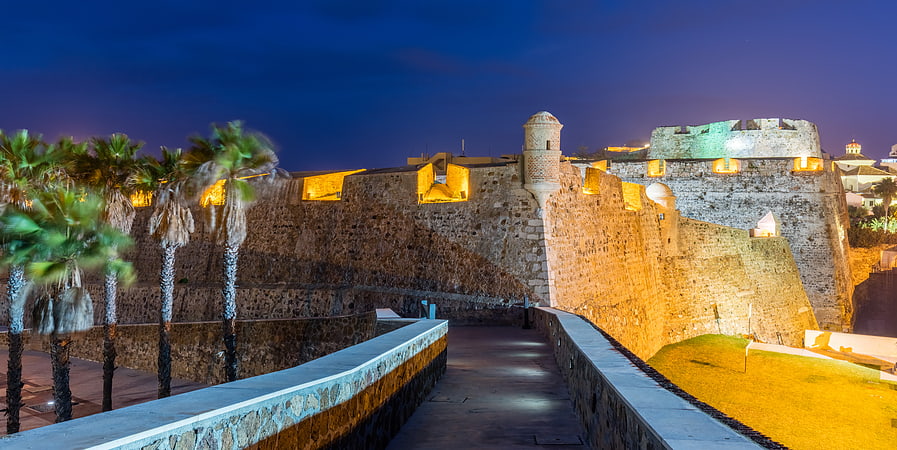
Also known as: Murallas Reales de Ceuta
Fortress in Ceuta, Spain. The Royal Walls of Ceuta are a line of fortification in Ceuta, an autonomous Spanish city in north Africa. The walls date to 962 in its oldest part and the most modern parts to the 18th century. They remain largely intact, with the exception of some outworks, and are listed as a Spanish Property of Cultural Interest.[1]
Address: Royal City Walls, 51001 Ceuta
Punta Almina Lighthouse
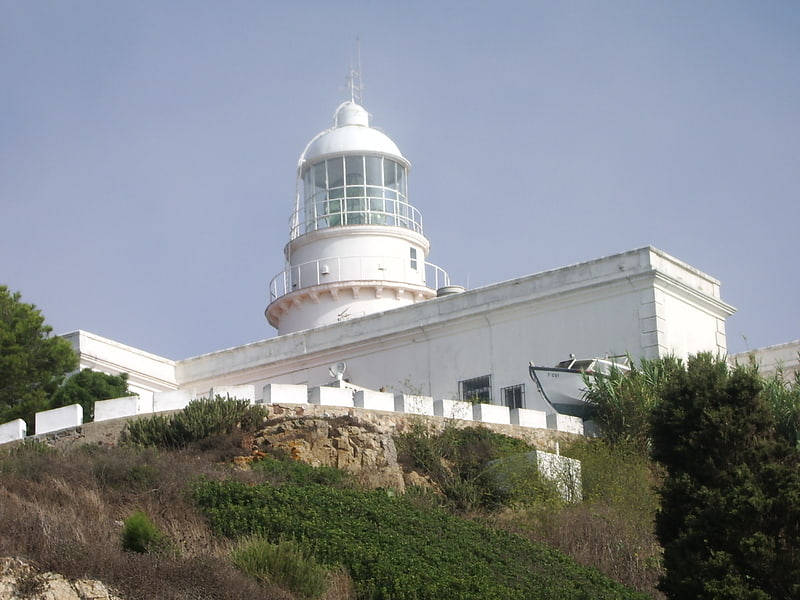
The Punta Almina Lighthouse is a lighthouse in the Peninsula of Almina of the autonomous city of Ceuta, Spain.[2]
Museum of Ceuta

The Museum of Ceuta also known as Museum of the Ravelin, is a museum located in Ceuta, Spain. It is based in the former Pabellón Militar del Cuartel del Revellín, and has a collection of archaeological pieces from the region of the Strait of Gibraltar from the Ancient Age to the Early Modern Age, although it currently holds only temporary exhibitions, while the museum of the Late Roman Basilica of Ceuta acts as a permanent exhibition from Prehistory to the Middle Ages.[3]
Arab Baths
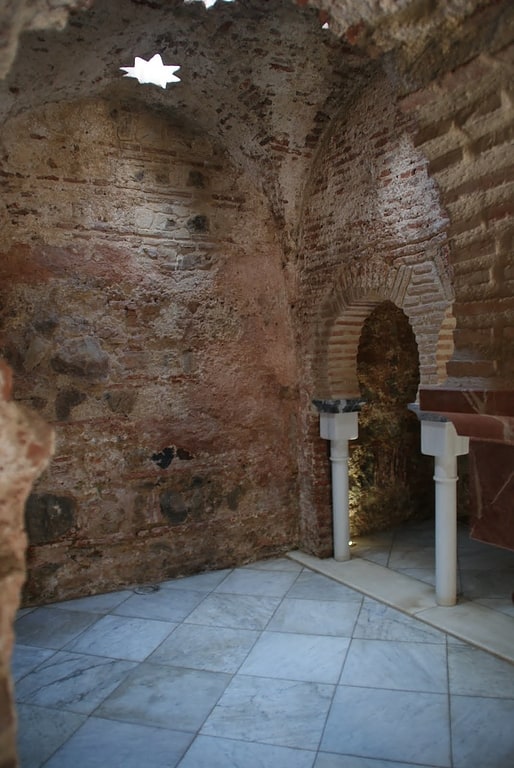
Also known as: Baño árabe de la plaza de la Paz
Monument in Ceuta, Spain. The Berber Baths in Ceuta are medium size medieval public baths on the northern edges of the Medina quarter. This is thought to have been occupied since the 11th century. Archaeological investigations in 2000 and 2004 have shown that the baths had one room for clothes and toilets followed by a cold bath and then a hot bath in a style laid down by the Romans. Other rooms may have existed.[4]
Ceuta Cathedral
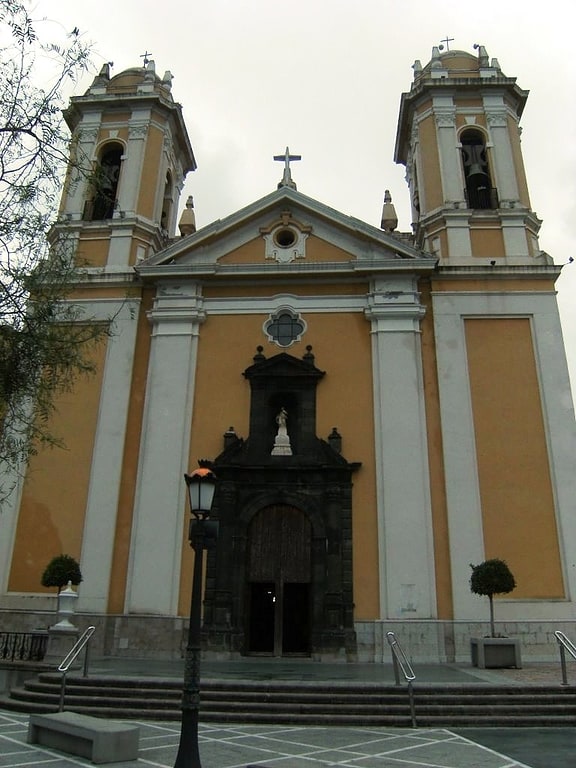
Also known as: Catedral de la Asunción de Ceuta
Mosque in Ceuta, Spain. The Cathedral of St Mary of the Assumption is a Roman Catholic church located in the Spanish city of Ceuta, in a small exclave on the northwest coast of Africa.
A primitive Eastern Roman Christian church stood on the site, and some researchers have identified this with the one built in the 6th century by Emperor Justinian I. This was replaced by the old Great Mosque of Ceuta, an architectural work of enormous wealth, according to descriptions which have survived, and although it underwent several enlargements, hardly any remains of it are to be seen today.
After the Portuguese conquest of 1415, the Great Mosque was transformed into a Christian church by alterations, but there is no record of what they were. The passage of time and damage suffered by warlike incidents caused the ruin of the building, and at the end of the 17th-century it was decided to replace it by a new church designed by the architect Juan de Ochoa. Building work began in 1686, but many difficulties were suffered in the years which followed as a result of a great siege to which Ceuta was subjected, and the new cathedral was not consecrated until 1726, when it was dedicated to the Assumption of Our Lady.
Attached to the cathedral, there is a building housing the Vicariate, Secretariat, Diocesan Archive, Library, Cathedral Museum, and other offshoots of the diocese, and there is also the bishop's palace, which surrounds a small triangular courtyard.
Important sights in the cathedral are the Chapel of the Most Holy Trinity, a Baroque altarpiece, and frescoes by Miguel Bernardini, besides three large canvases and a 15th-century figure of the Great Virgin, which is of Portuguese origin.[5]
Address: Plaza de África, 9, 51001 Ceuta
Parque Marítimo del Mediterráneo

Park in Ceuta, Spain. The Parque Marítimo del Mediterráneo is a leisure complex covering 55,000 m2 located in the autonomous Spanish city of Ceuta, bordering northern Morocco. It consists of three artificial lakes of salt water, filtered directly from the sea. These are suitable for swimming during the summer months. The park also contains gardens, ornamental waterfalls, sunbathing areas, a stage for concerts and shows and various entertainment establishments such as bars, restaurants, pubs, a casino, and a nightclub, etc. It was designed by the versatile Lanzarote-born artist César Manrique and inaugurated in 1995, nearly three years after his death. It has similarities with Parque Marítimo César Manrique in Puerto de la Cruz, Tenerife, designed by the same architect two decades earlier. In the centre of the complex is a unique building, as it mimics the Royal Walls of Ceuta and the moat of San Felipe. This building houses the casino, a nightclub and a restaurant. The park also has a permanent exhibition about its creator, Manrique.[6]
Address: Avenida Compania de Mar, 51001 Ceuta
Military Museum of the Legion
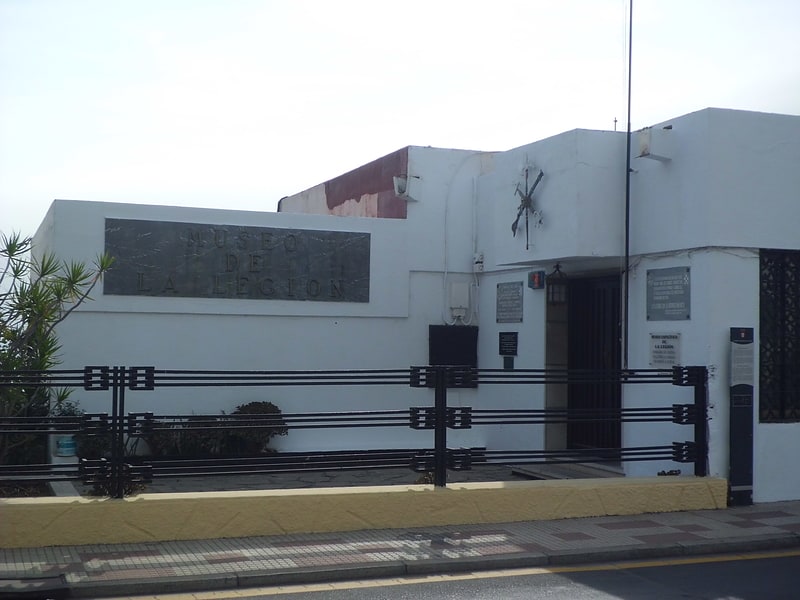
Also known as: Sala-museo de la Legión
Museum in Ceuta, Spain. The Military Museum of the Legion was established in 1940 to celebrate the Spanish Legion. The Legion and its museum moved to Ceuta in 1956 when Morocco gained independence from Spain. At first the museum was in a small room of the barracks of the 2nd Regiment of the Legion in Dar-Riffien. Upon the Moroccan independence, the museum was moved to the Barracks of El Serrallo but a purpose built building was constructed in 1978 on the Paseo de Colón.[7]
Port of Ceuta

Harbor in Ceuta, Spain. The Port of Ceuta is a passenger and cargo port located on the North African coast, in the Strait of Gibraltar, belonging to the Spanish autonomous city of Ceuta.[8]
Monte Hacho
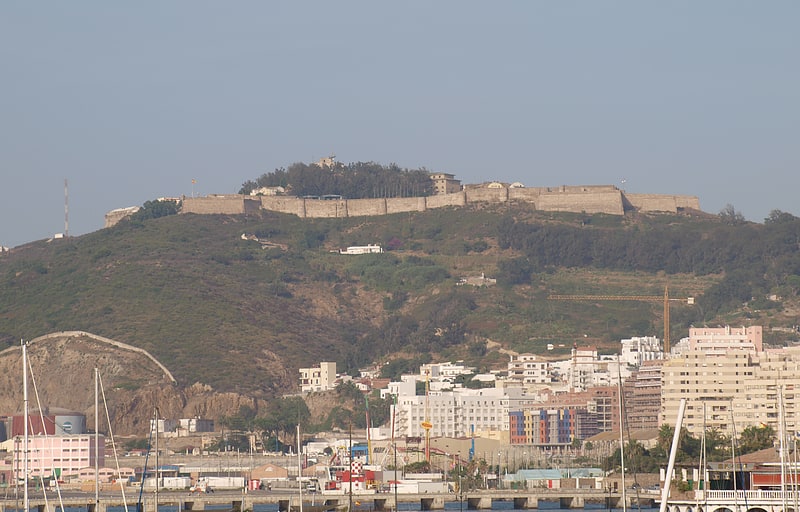
Mountain with area views and a fort. Monte Hacho is a low mountain that overlooks the Spanish city of Ceuta, on the north coast of Africa. Monte Hacho is positioned on the Mediterranean coast at the Strait of Gibraltar opposite Gibraltar, and along with the Rock of Gibraltar is claimed by some to be one of the Pillars of Hercules. According to the legend Hercules pushed apart the two mountains and created a link between the Mediterranean and the Atlantic.
In classical civilization it was possibly known as Mons Abila (Mount Abila or Abyla), although this title could refer to Jebel Musa instead.
Monte Hacho is located on the Península de Almina and topped by a fort, the Fortaleza de Hacho, which was first built by the Byzantines, before being added to by the Arabs, Portuguese and Spanish. It is now occupied by the Spanish army. Monte Hacho also has a convent, Ermita de San Antonio, and Monumento del Llano Amarillo which is a monument to Generalisimo Francisco Franco and the start of the Spanish Civil War in North Africa in 1936.[9]
Casa de los Dragones
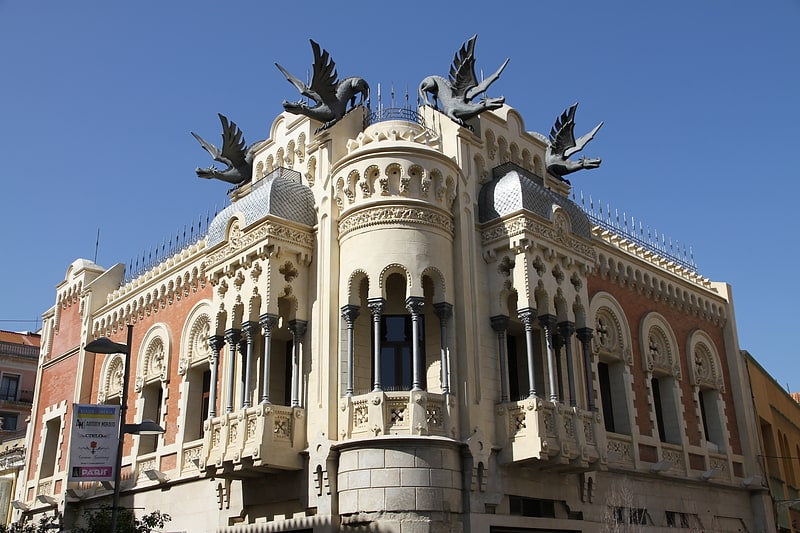
Tourist attraction in Ceuta, Spain. Casa de los Dragones is an important landmark in the Spanish exclave of Ceuta on the north coast of Africa, and an extraordinary example of eclectic architecture. The house is on a corner of Kings Square.[10]
Address: Calle Millan Astray 1, 51001 Ceuta
Playa de la Ribera
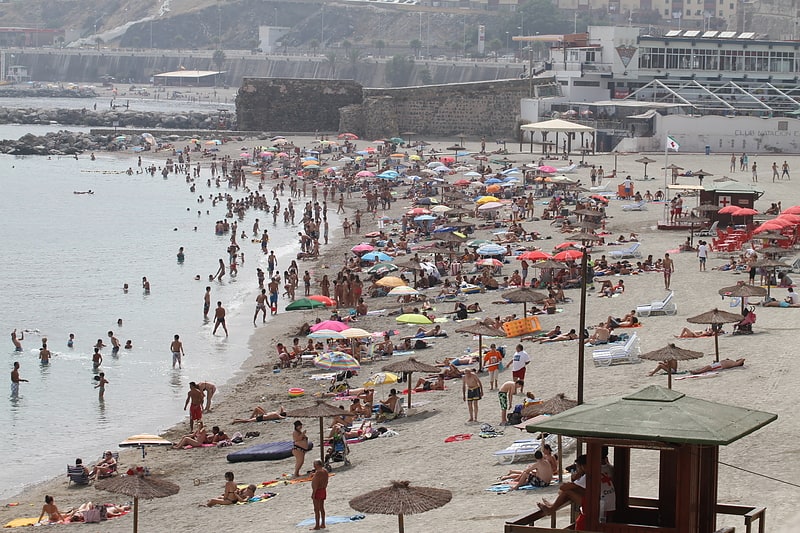
Also known as: Playa de La Ribera
Beach in Spain. Playa de la Ribera is a beach of Ceuta, a Spanish city bordering northern Morocco. Like the Playa del Chorillo, it lies to the south of the isthmus but on the part where it joins the mainland. It is about 405 metres long, with an average width of 40 metres. It is very busy during the summer months.[11]